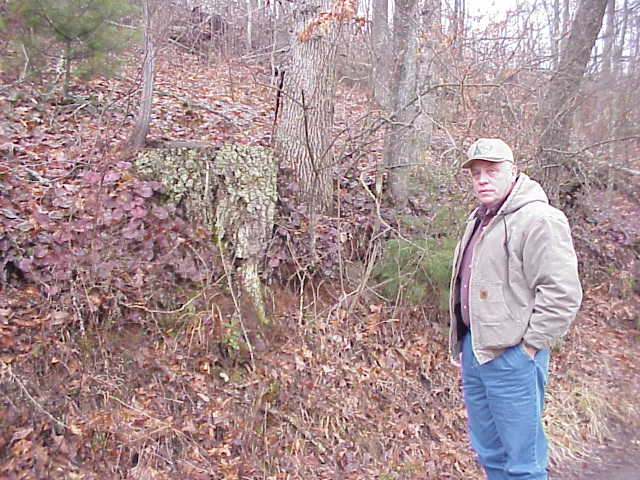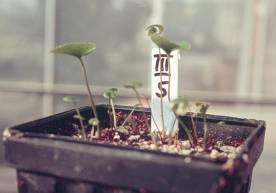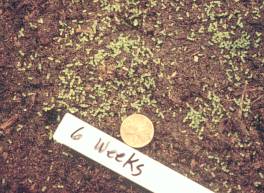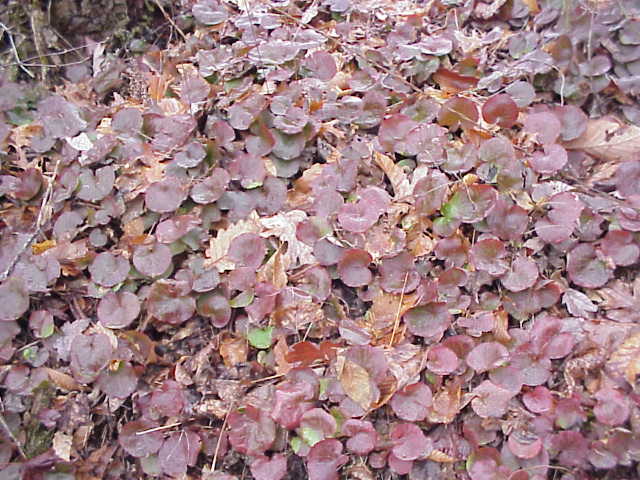Domesticating Galax-2002 Report
go.ncsu.edu/readext?454085
en Español / em Português
El inglés es el idioma de control de esta página. En la medida en que haya algún conflicto entre la traducción al inglés y la traducción, el inglés prevalece.
Al hacer clic en el enlace de traducción se activa un servicio de traducción gratuito para convertir la página al español. Al igual que con cualquier traducción por Internet, la conversión no es sensible al contexto y puede que no traduzca el texto en su significado original. NC State Extension no garantiza la exactitud del texto traducido. Por favor, tenga en cuenta que algunas aplicaciones y/o servicios pueden no funcionar como se espera cuando se traducen.
Português
Inglês é o idioma de controle desta página. Na medida que haja algum conflito entre o texto original em Inglês e a tradução, o Inglês prevalece.
Ao clicar no link de tradução, um serviço gratuito de tradução será ativado para converter a página para o Português. Como em qualquer tradução pela internet, a conversão não é sensivel ao contexto e pode não ocorrer a tradução para o significado orginal. O serviço de Extensão da Carolina do Norte (NC State Extension) não garante a exatidão do texto traduzido. Por favor, observe que algumas funções ou serviços podem não funcionar como esperado após a tradução.
English
English is the controlling language of this page. To the extent there is any conflict between the English text and the translation, English controls.
Clicking on the translation link activates a free translation service to convert the page to Spanish. As with any Internet translation, the conversion is not context-sensitive and may not translate the text to its original meaning. NC State Extension does not guarantee the accuracy of the translated text. Please note that some applications and/or services may not function as expected when translated.
Collapse ▲This is a 2003 report from a NC Specialty Crops Program Project. It is posted for reference purposes.
Reviewed by Jeanine Davis, NC Alternative Crops & Organics Program, Department of Horticultural Science, NC State University on 3/11/2025.
PROJECT LEADER(S): Richard Bir, Claude Deyton
TYPE OF PROJECT: Research and On-Farm Trial
LOCATION: Henderson County (Mountain Horticultural Crops Research and Extension Center), and Yancey County, North Carolina
IMPACT
Collection of galax in western North Carolina has a major economic impact in the region that is not likely to be sustained using current practices. Wild populations will eventually be depleted due to over-harvesting and/or protected and restricted from collectors. Therefore, the development of commercial production systems is needed to ensure a continued ability to supply this product. This study represents a first step in establishing effective propagation methods for galax. Research and introduction of sustainable production techniques will enable residents of western North Carolina to continue to benefit from the utilization of native forest products.
INTRODUCTION
Galax (Galax urceolata) is a perennial plant native to the mountains of North Carolina and other areas of the eastern U.S. The foliage of this species is widely collected from the wild for use in the floral design industry. This crop has a major impact on the economy of rural western North Carolina, but current and projected future market demand is estimated to exceed current sustainable supply. In addition, galax foliage harvest may be closed or severely limited on public land in the near future. Either situation could destroy this important regional agricultural enterprise.
The objective of this project is to acquire information that will foster commercial production of galax by mountain farmers. Our primary aim is to determine how to propagate galax in order to reduce wild-harvesting and protect existing native populations. Because this is a very slow growing crop, we implemented a dual approach in order to produce results in a timely manner: on farm trials were established under varying cultural conditions, and research trials were initiated at the MHCREC in Fletcher.
METHODS
Fourteen on-farm trials were established in all sections of Yancey County, North Carolina. Plants were transplanted from existing native stands to establish these plots. Shade requirements and organic soil amendments were evaluated.
A literature review yielded little published research on galax propagation. However, conversations with propagators and nurseries provided some insight. Appropriate permits and permission were obtained to collected seeds from the wild. Germination was evaluated by varying light, temperature, and moisture. In addition, a by-product of the commercial galax collection and grooming industry is rhizome pieces. Tests were conducted to determine the impact of gibberellic acid and indole-3-butyric acid on bud and root development on sections of rhizome. Plant material was also provided to two micropropagation specialists who expressed interest in investigating this propagation method.
RESULTS
On farm tests: Plants transplanted into 3-inch deep, ten-year-old sawdust and crushed leaves thrived even in dry conditions. Plants grown in full sun or partial shade without shade cloth did not survive. Shade cloth sites without the organic matter in the form of old sawdust/crushed leaves did not thrive.
Seed germination: Viable seeds were wild collected in October, November and early December. Research results demonstrate that no scarification or stratification of seeds is necessary. Extended day length did not enhance germination. We were able to obtain germination at 65 F. night temperature/75 F. day temperature in 14 to 21 days by sowing seeds on sphagnum peat in a winter greenhouse and keeping seeds moist either under mist or in a plastic high humidity chamber (shaded plastic bag).
Rhizomes: No tested rate of IBA (1250, 2500, 5000 and 10000 ppm quick dip) or GA3 (500 or 1000 ppm 15 min soak) treatment resulted in a higher percentage of rhizomes rooting or breaking bud by the end of the 3-month test period. Our trials revealed that soaking the rhizome is an important factor: rhizome pieces needed to be soaked overnight in room temperature water before they were stuck into our propagation media or the percentage of rhizomes producing leaves and roots decreased dramatically.
GA3 treatments caused an earlier bud break at lowest concentrations but there was no significant difference in numbers of leaf buds to break by the end of 3 months. IBA did not increase the percentage rooting. However, by the end of the summer, 6 months or greater after inception of the experiment, those rhizome pieces treated with any concentration of IBA had filled 3 inch pots with roots and those that had not been treated with IBA had pots less than half full of roots.
Micropropagation: Neither lab had any positive results to share.
CONCLUSION
This is a beginning. Seed propagation currently appears to be the most practical propagation method available. Galax is VERY slow growing but we now have enough plants so that we have initiated cultural studies.
Our research demonstrated that propagation by rhizome sections is possible, but does not appear to be a practical means for commercial production. Micropropagation holds great potential for rapid increase of large numbers of plants, but techniques have not yet been established.
Our on-farm tests demonstrated that we cannot circumvent or speed-up natural growing conditions yet. Galax must be grown in the shade, at least during the establishment phase. Galax roots establish best in organic growing media. When thriving wild sites were investigated, most galax roots were growing in leaf mold from the deciduous forest canopy rather than in mineral soils.
This research and associated work is scheduled to be reported at the International Plant Propagation Society 2003 Annual Meeting in Portland, ME.
Photos






